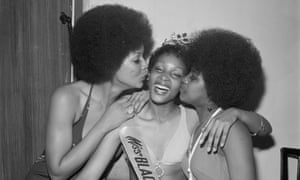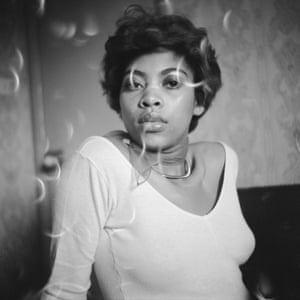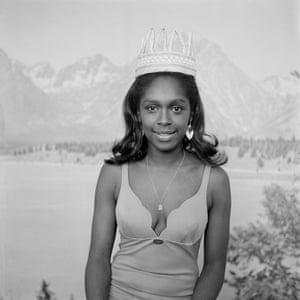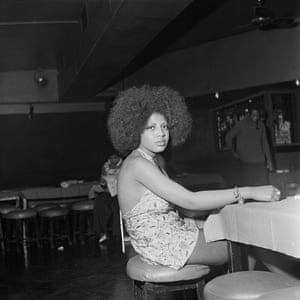Miss Black and Beautiful: the pageants where curves and afros ruled
A new photo exhibition explores black beauty contests in the 60s and 70s, which challenged white aesthetic standards and celebrated a range of body shapes
Sybil McLean’s face is pressed between two beauty pageant rivals. Her spontaneous joy, the symmetry of the twin afros framing her face, and the affectionate way her arms encircle her friends can’t fail to raise a smile. The photograph, capturing the winner of the 1972 Miss Black and Beautiful pageant, is part of an exhibition of the work of Raphael Albert, a promoter and photographer of black beauty pageants in the 1960s, 70s and 80s.
Today, beauty pageants feel tawdry and anachronistic, but Albert’s pictures highlight another side. As curator Renee Mussai puts it: “There is a sense of laughter and solidarity that appears genuine and playful.” It’s not the only difference. While the women are still young, beautiful and slim, they are far from being identikit contestants. Sybil is as pretty and elegant as the stereotypical beauty queen, but her closely cropped hair is unusual, as are her competitors’ afros. Other photos show a range of skin tones, as well as curvaceous figures among the tall and slender shapes in mainstream competitions.
Mussai points out that while black women could, and did, compete in mainstream beauty pageants (Grenadian Jennifer Hosten won Miss World in 1970), to do so they had to adhere to “Eurocentric” notions of beauty. The pageants Albert created and documented – complete with evening wear and swimsuit rounds – were no less objectifying than Miss World, which feminists were already protesting over (flour and tomatoes were thrown at the 1970 contests). But they offered a rare space to challenge white ideals of beauty. Mussai argues that black beauty pageants were about “occupying a space that has historically negated black women”. While Albert’s pageants were undoubtedly a commercial proposition, by naming one Miss Black and Beautiful he was deliberately echoing the Black Power slogan “Black is Beautiful”, which sought to overturn the way black features – skin tones, hair types – had been denigrated for centuries.
Albert’s pageants were relatively small and local. Still, McLean remembers that Miss Black and Beautiful packed out the Hammersmith Palais with an audience of both men and women. Notably absent were McLean’s parents, who, she says, disapproved of her entering a beauty contest (they were not so strict that they weren’t thrilled when she won). Now retired from a career in human resources, the former beauty queen says race or gender politics could not have been further from her mind as a 22-year-old in 1972. “It was just something I decided to do. I’d seen it advertised in one of the black newspapers and it was just down the road, so I thought: ‘Why not?’” Despite not getting a prize, she never regretted entering, and Albert, who promoted cultural events celebrating Caribbean communities and set up a magazine, became a lifelong friend until his death in 2009.
Mussai says she has been struck by how the issues raised by the pageants are still being fought over today. From Beyoncé’s Lemonade video – which showcases the diversity of black beauty with a parade of women from Serena Williams toQuvenzhané Wallis – to controversies about the lack of Hollywood actresses with darker skin tones, questions around race, beauty and gender remain.
She admits to an ambivalence about the contests and their message that the most important thing about women is the way they look. But the women’s self-confidence leaves the biggest impression: in place of simpering smiles they flash broad grins or stare proudly into the camera lens. For Mussai this makes them refreshing and an illuminating insight into the “hedonistic confidence in a new generation of black women coming of age in Britain during the 1970s”. This is certainly how McLean remembers her win. “It was an adventure,” she says, smiling, “It felt wonderful.”
Raphael Albert: Miss Black and Beautiful is at Rivington Place, London EC2A 3BA from 8 July. autograph-abp.co.uk/
https://www.theguardian.com/artanddesign/2016/jul/03/miss-black-and-beautiful-the-pageants-where-curves-and-afros-ruled






Nenhum comentário:
Postar um comentário